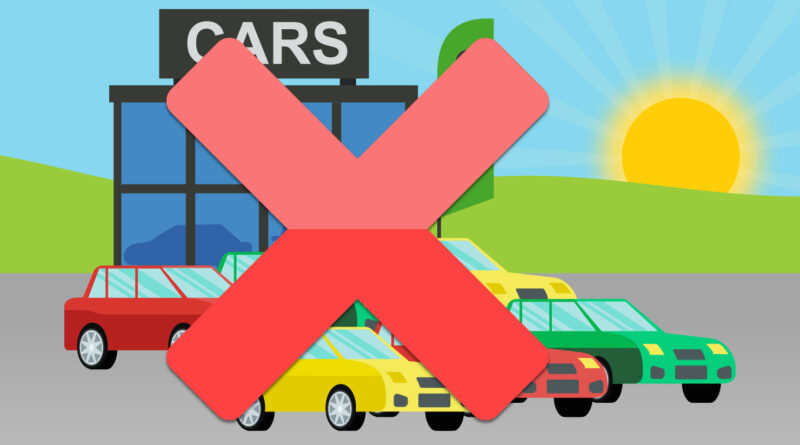Guide The 2035 Ban on Petrol and Diesel Cars
In an ambitious bid to combat climate change and reduce air pollution, many countries, including those in the European Union, the United Kingdom, and others, are set to implement a ban on the sale of new petrol and diesel cars by 2035 it has been pushed back from 2030. The automotive industry is on the cusp of a revolutionary transformation. This article explores the implications of the 2035 ban, its impact on consumers and the automotive industry, and what it means for the future of transportation.
Understanding the 2035 Ban
The 2035 ban on new petrol and diesel cars is part of a broader strategy to achieve net-zero carbon emissions by mid-century. By prohibiting the sale of new internal combustion engine (ICE) vehicles, governments aim to accelerate the transition to cleaner, electric vehicles (EVs) and hybrid alternatives. This move is expected to significantly reduce greenhouse gas emissions and improve air quality.
Key Points of the 2035 Ban
- Scope of the Ban: The ban will apply to the sale of new petrol and diesel cars and vans. Existing ICE vehicles can still be used and sold in the second-hand market.
- Inclusion of Hybrids: Some regions plan to phase out hybrid vehicles slightly later, recognizing their role as a transitional technology.
- Infrastructure Development: Significant investment in EV charging infrastructure is a crucial component of the plan to support the widespread adoption of electric vehicles.
Impact on Consumers
1. Vehicle Choices:
- Shift to Electric Vehicles: Consumers will need to transition to electric vehicles, which offer benefits such as lower running costs, reduced emissions, and less maintenance.
- Hybrid Options: Until their eventual phase-out, hybrid vehicles provide an interim solution for those hesitant to switch directly to full EVs.
2. Financial Incentives:
- Subsidies and Grants: Governments may offer financial incentives, such as subsidies, grants, and tax breaks, to make EVs more affordable.
- Lower Operating Costs: Despite higher upfront costs, EVs generally have lower fuel and maintenance expenses.
3. Charging Infrastructure:
- Increased Availability: The expansion of public and private charging stations will make owning and operating an EV more convenient.
- Home Charging: Home charging solutions are expected to become more common and affordable.
Impact on the Automotive Industry
1. Manufacturing Shift:
- Re-tooling and Investment: Car manufacturers are investing heavily in re-tooling factories and developing new EV models to meet future demand.
- Job Creation: The shift towards EV production is likely to create new jobs in the green energy sector, although there may be a transitional period of job losses in traditional manufacturing roles.
2. Innovation and Competition:
- Technological Advancements: The ban is spurring innovation in battery technology, charging infrastructure, and autonomous driving systems.
- Market Competition: Traditional automakers are competing with new EV manufacturers, leading to a broader range of options and potentially lower prices for consumers.
3. Supply Chain Evolution:
- Battery Production: The demand for lithium-ion batteries is increasing, leading to the development of new supply chains and recycling methods to manage battery production sustainably.
- Raw Materials: Ensuring a sustainable supply of raw materials for batteries, such as lithium, cobalt, and nickel, is crucial.
Environmental and Social Benefits
1. Reduced Emissions:
- Cleaner Air: A significant reduction in NOx, CO2, and particulate matter emissions will improve air quality, especially in urban areas.
- Climate Goals: The ban supports national and international efforts to meet climate targets and reduce global warming.
2. Public Health:
- Health Benefits: Lower emissions contribute to fewer respiratory and cardiovascular diseases, benefiting public health and reducing healthcare costs.
3. Economic Growth:
- Green Economy: The transition to EVs is driving growth in the green economy, creating opportunities in renewable energy, technology development, and sustainable manufacturing.
Preparing for the Transition
1. Research and Education:
- Stay Informed: Keep up-to-date with the latest developments in EV technology, incentives, and regulations.
- Education Programs: Participate in programs that educate consumers and businesses about the benefits and practicalities of EV ownership.
2. Infrastructure Planning:
- Install Charging Stations: Consider installing home charging stations and advocate for workplace and public charging infrastructure in your community.
- Energy Management: Explore renewable energy sources, such as solar panels, to power your EV sustainably.
3. Financial Planning:
- Budgeting for EV Purchase: Plan for the purchase of an EV by considering financing options, potential savings, and available incentives.
- Maintenance and Insurance: Research the maintenance and insurance costs associated with EVs to make informed financial decisions.
Conclusion
The 2035 ban on new petrol and diesel cars marks a significant milestone in the global effort to reduce carbon emissions and combat climate change. While it presents challenges for consumers and the automotive industry, it also offers numerous opportunities for innovation, economic growth, and environmental improvement. By staying informed and prepared, you can navigate this transition smoothly and contribute to a cleaner, greener future.
Buying a used VW. Buying used vauxhall, BMW, Jaguar, Ford, Volvo, Range rover, Bentley, Aston Martin, Porsche, Ferrari, Lamborghini, Maserati, Hyundai, Tesla, Honda, Pagani

